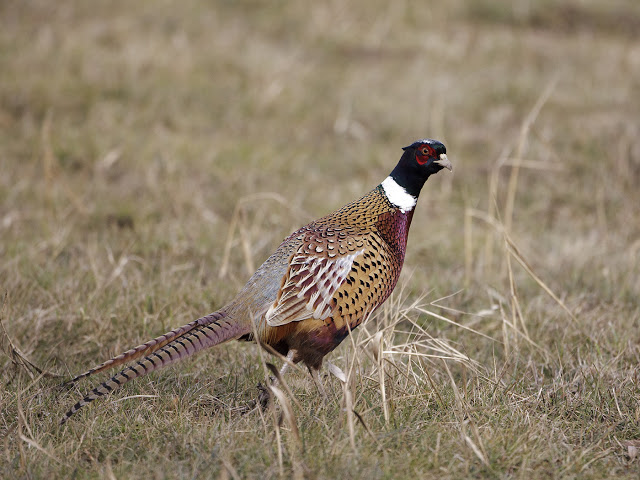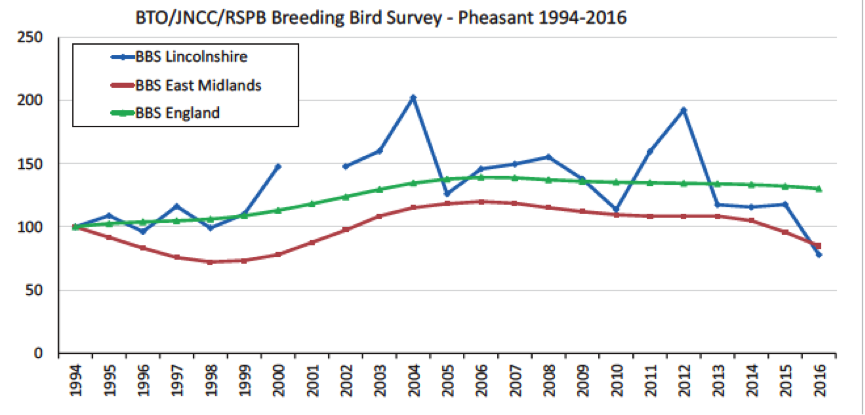Common Pheasant Phasianus colchicus
Very common feral resident: huge numbers released for shooting annually.

The Common Pheasant's native European range covers western Georgia, the west Caspian shore plain, Armenia and Azerbaijan, from where it then extends east along the northern slopes of the Himalayas, north into Manchuria and Korea and south towards Vietnam, also being found on Taiwan. It is not a native species in Britain or Western Europe but has a long history of residence here.
The Romans began the process of introductions, which dates back to the 15th century, and stock introduced by the Normans was probably the basis of today’s population, which did not spread across the whole of Britain until the late 1700s.In 1899 Cordeaux considered that the old type Phasianus colchicus colchicus was probably extinct in the county and that many birds were hybrids between this race and in the 18th century the Chinese ring-necked race P. c. torquatus was introduced. At present, it is the latter race which is dominant in most quarters.
Annual records number in the 1000s from a wide variety of sites across the county with flock counts of greater than 100 quite common. However, with many thousands of birds released on shooting estates annually, such records are largely academic. Few breeding records are submitted for such a common resident. The BBS records declining trends in England (statistically significant) and the East Midlands, a pattern that is reflected in data for Lincolnshire alone (see chart). This decline appears to have been underway since around 2005. It does, of course, record the situation for wild-breeding birds and not the much larger numbers released in late summer before the shooting season starts.

